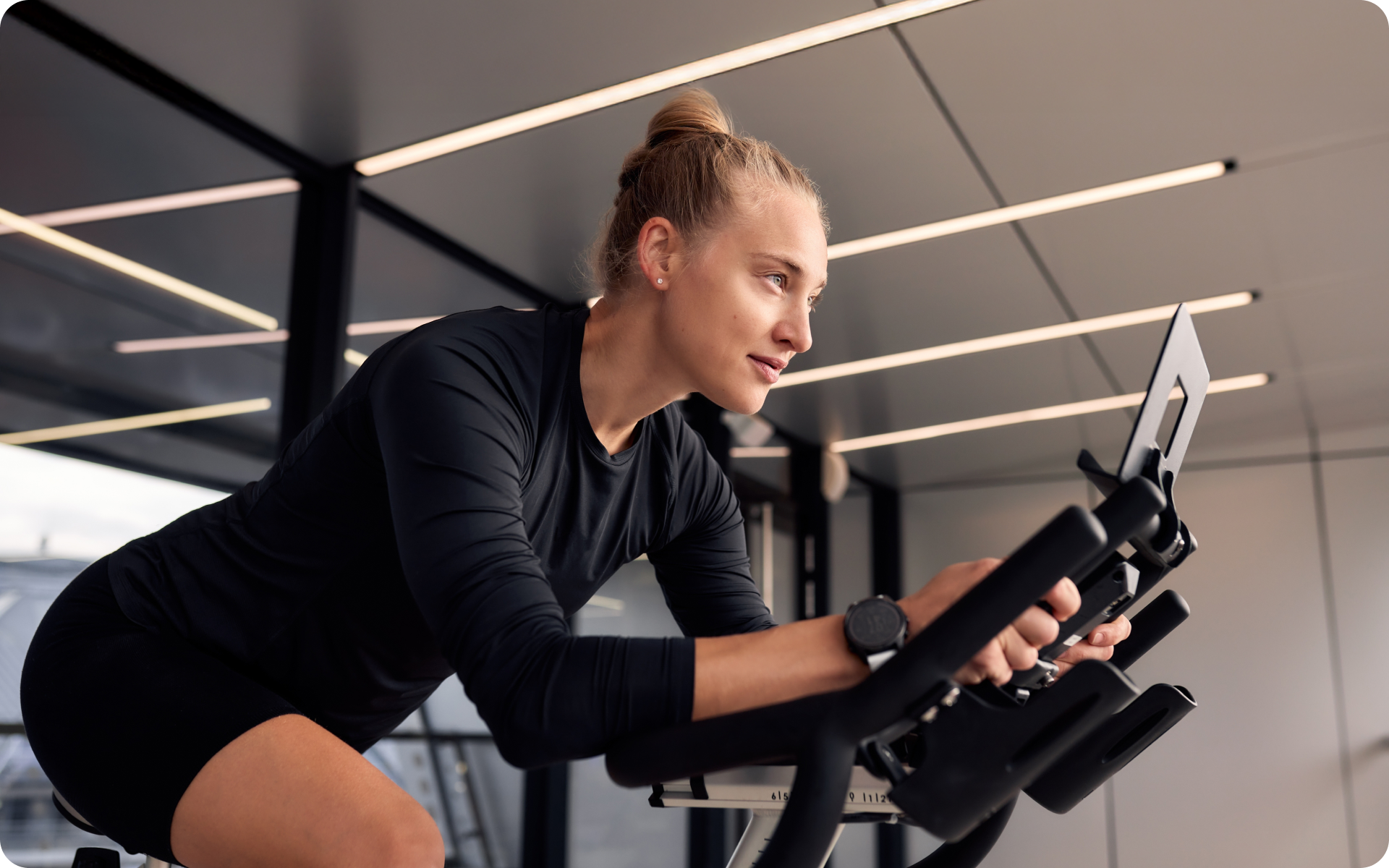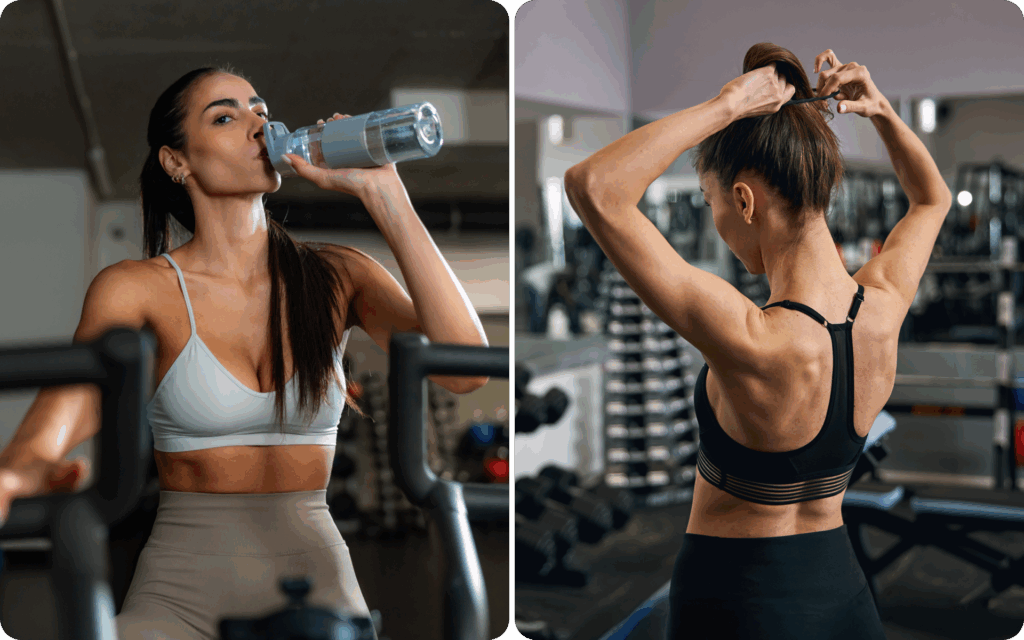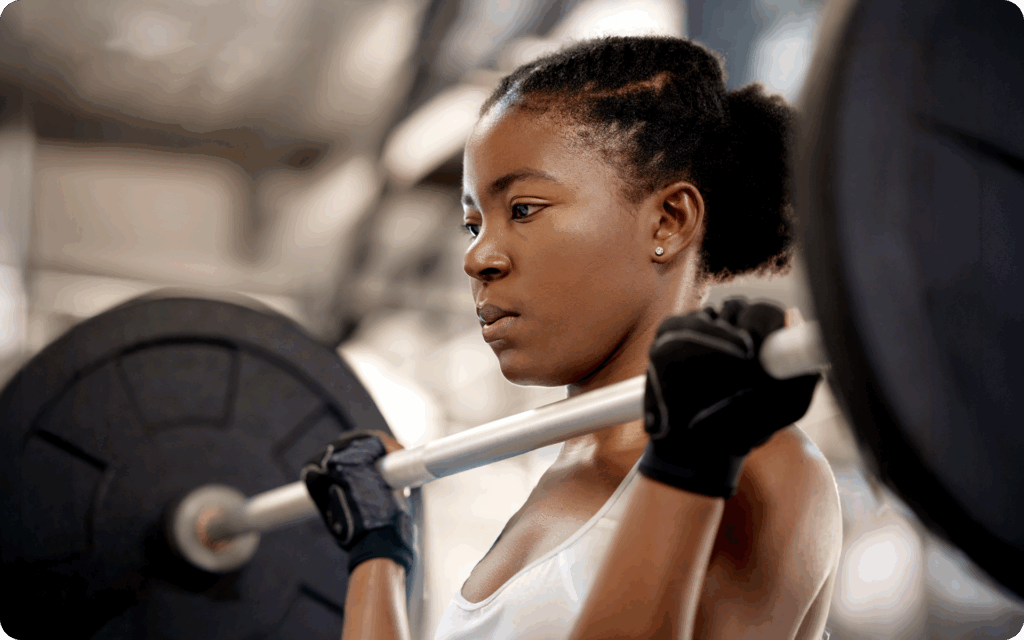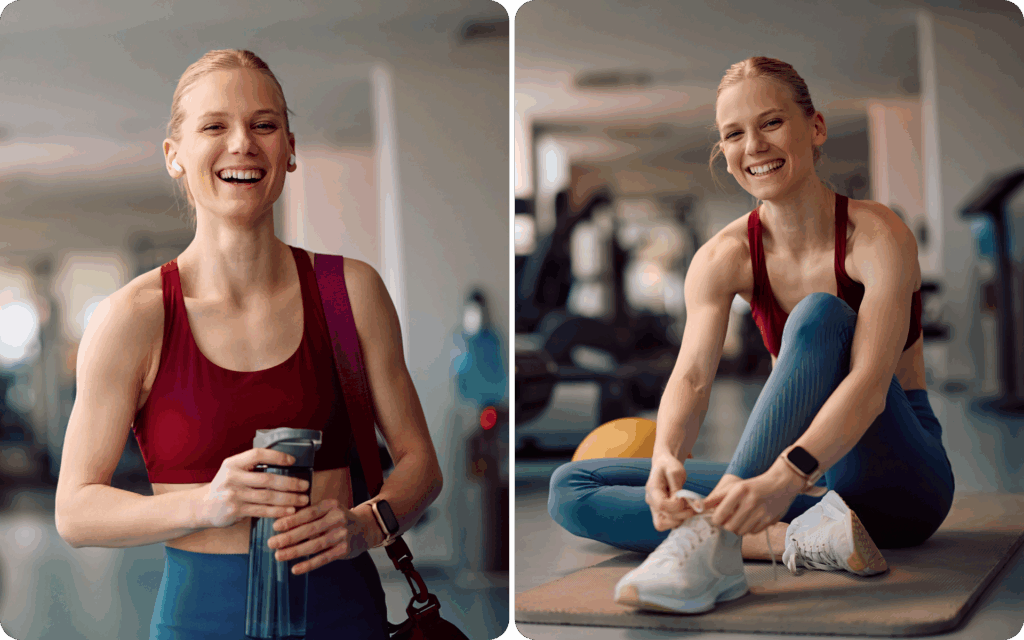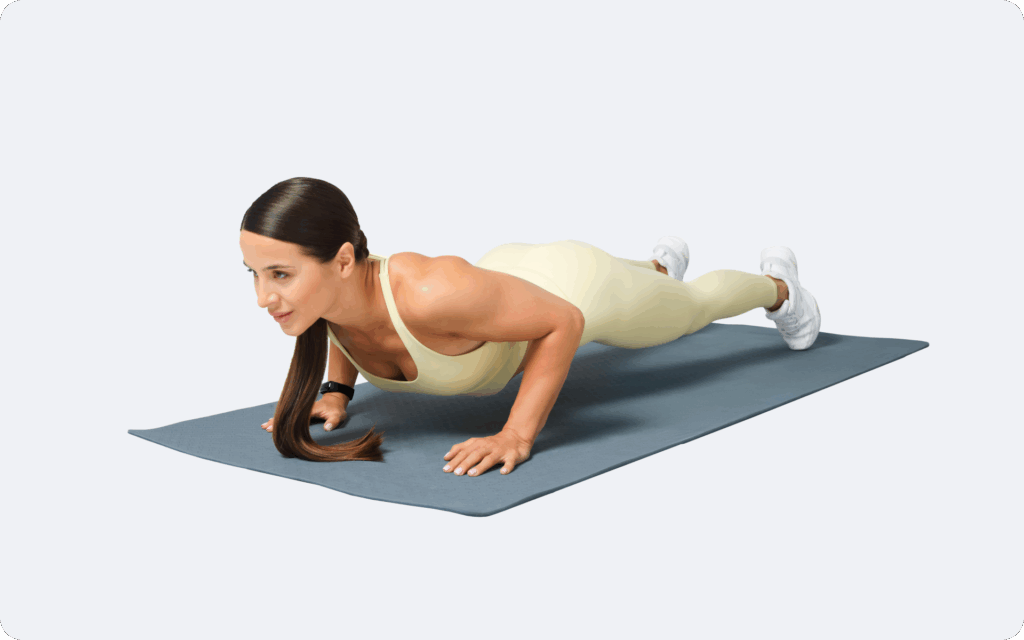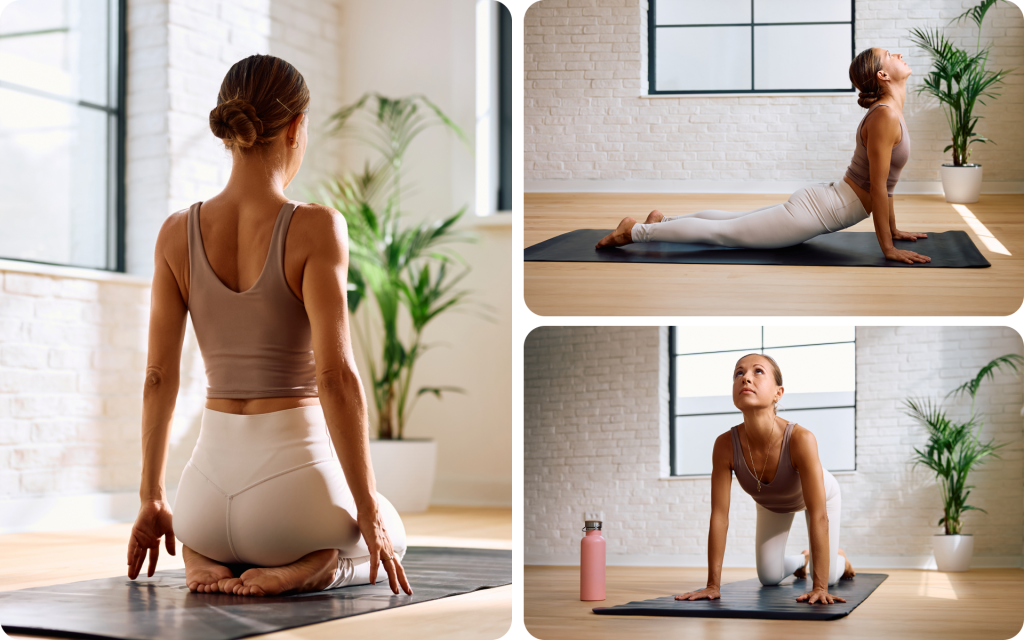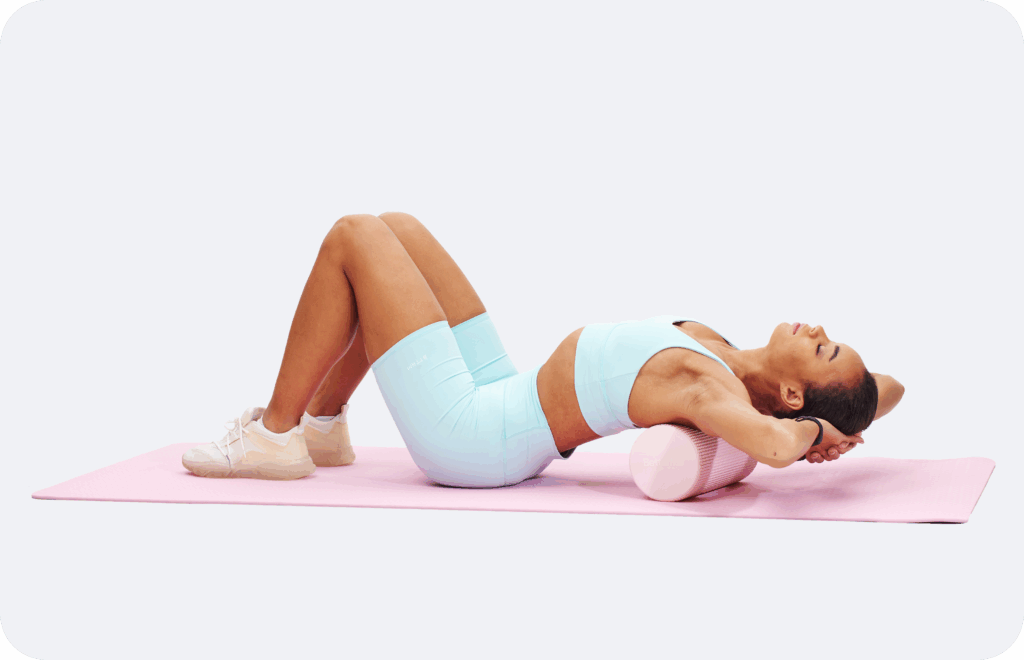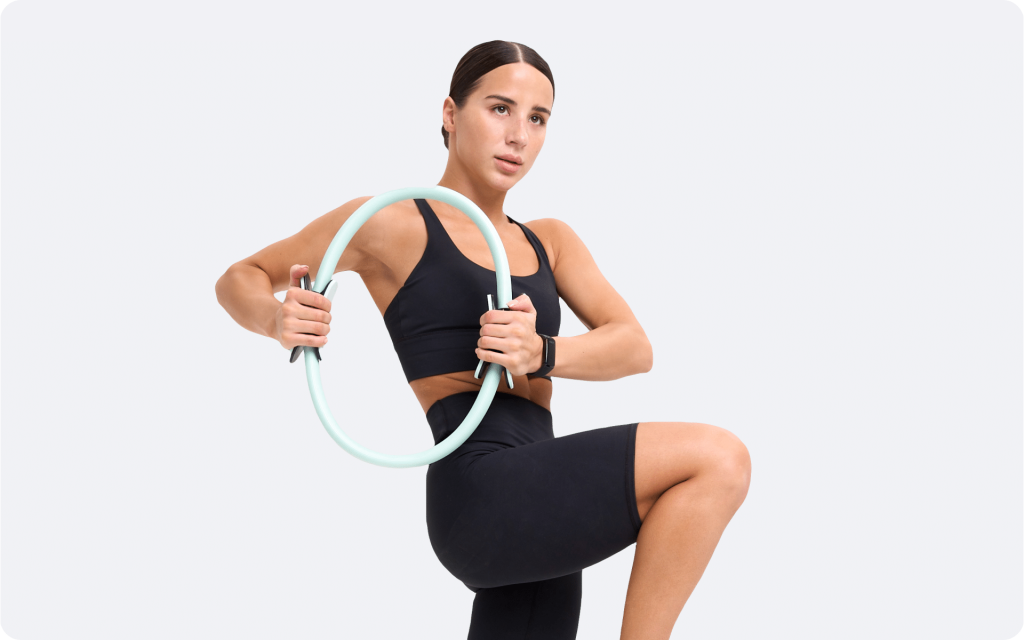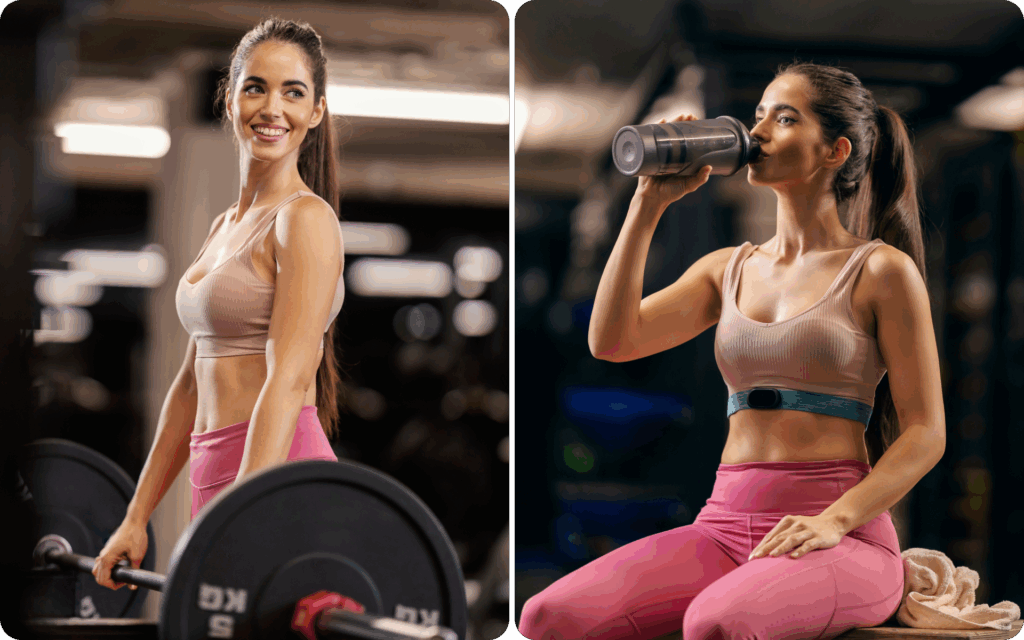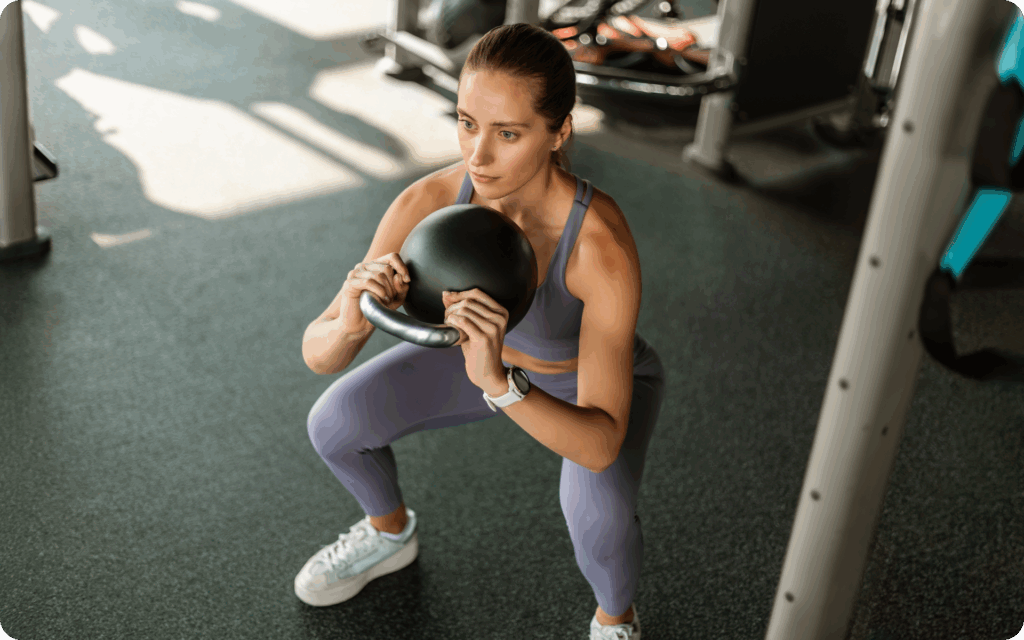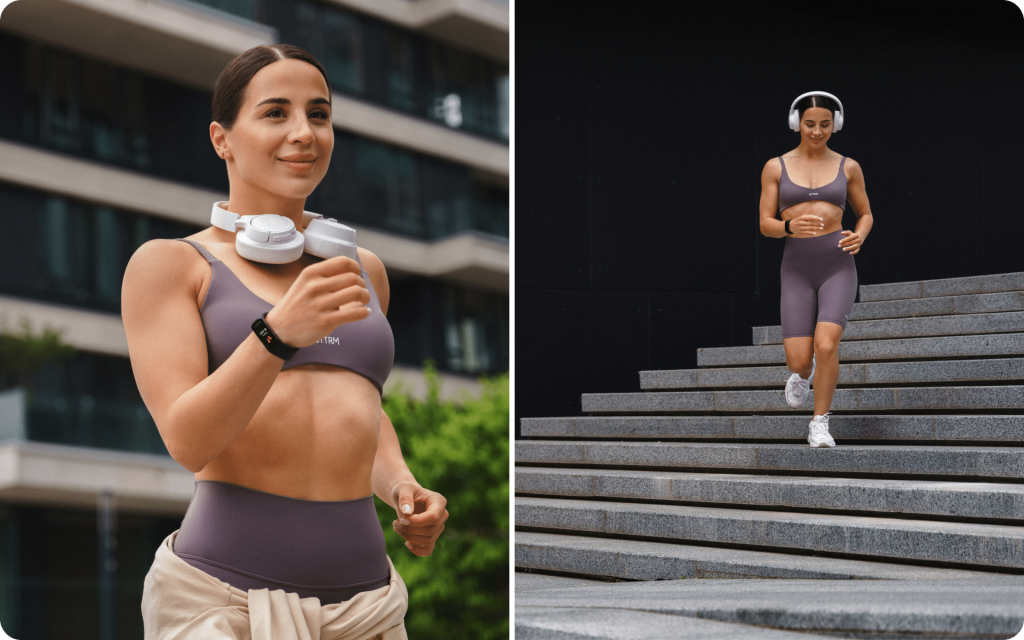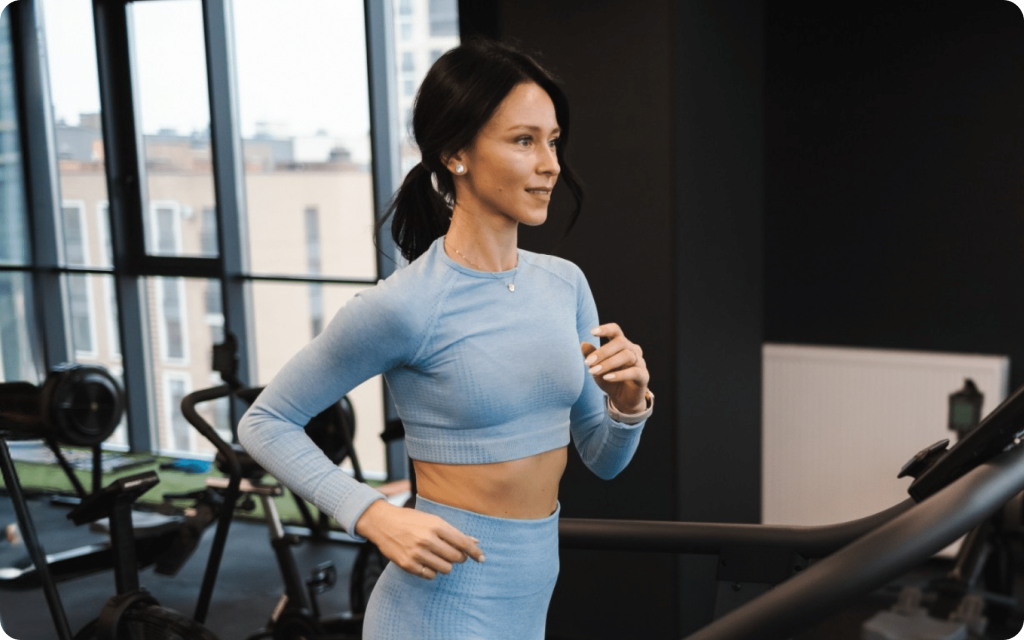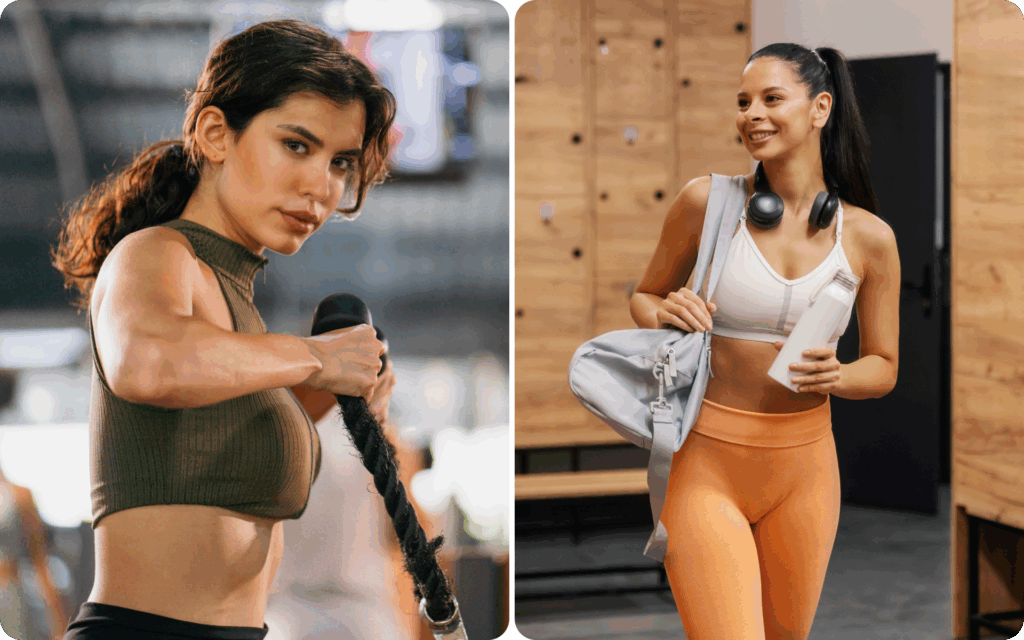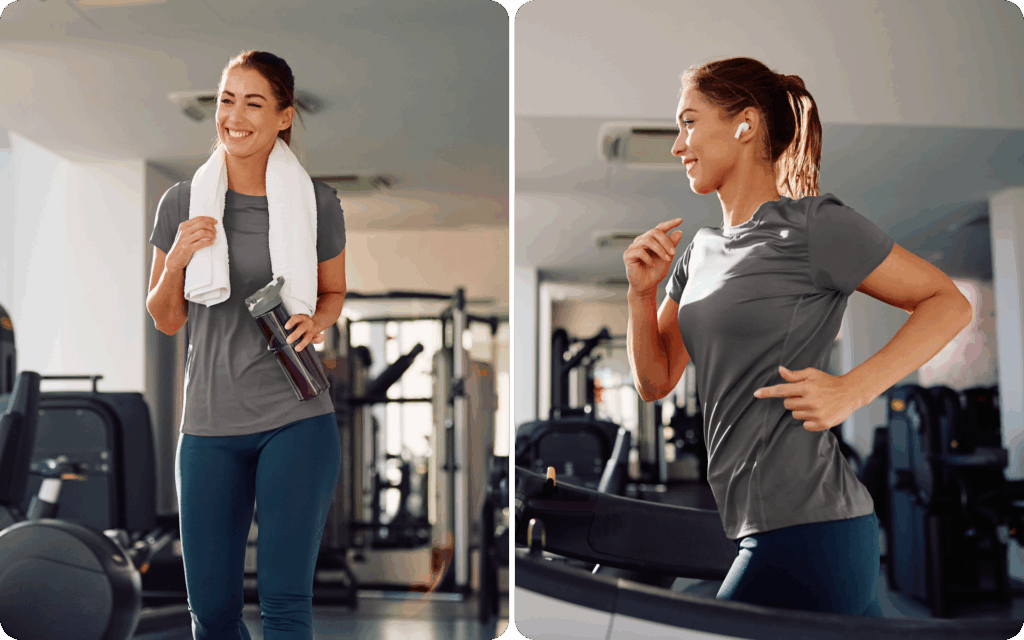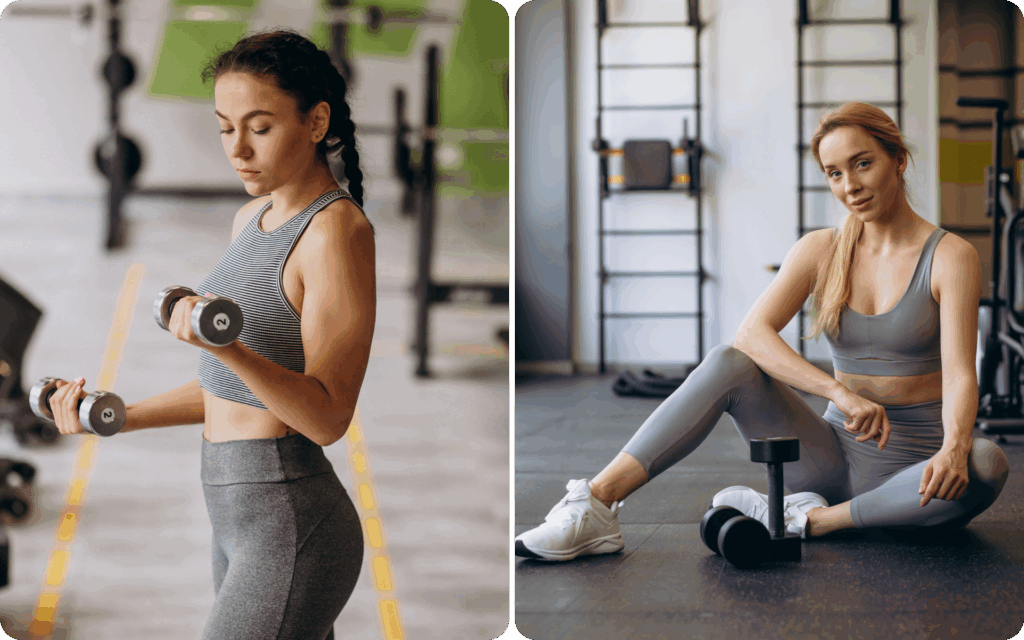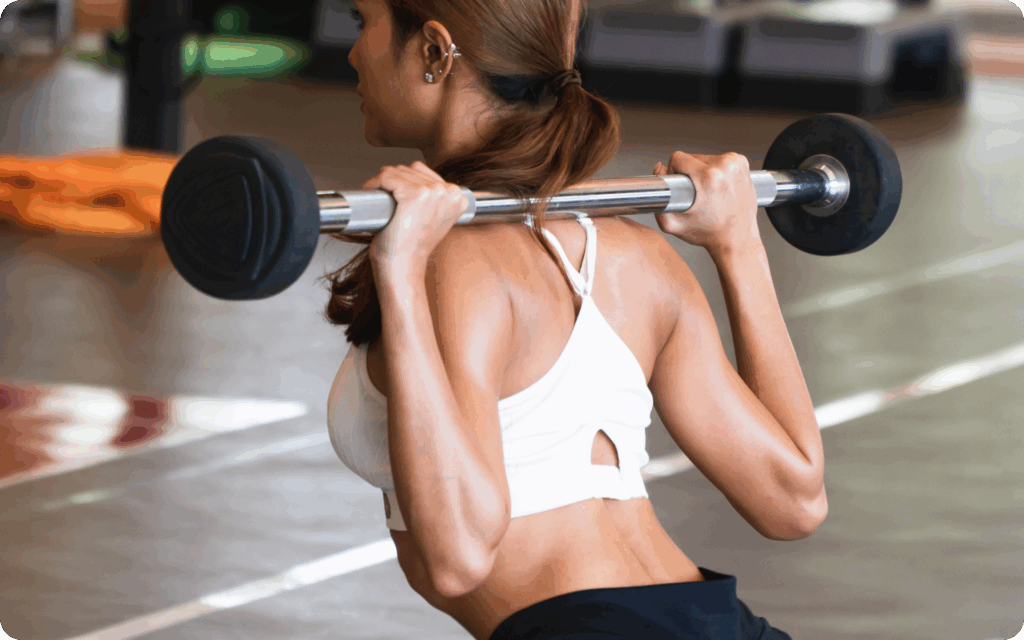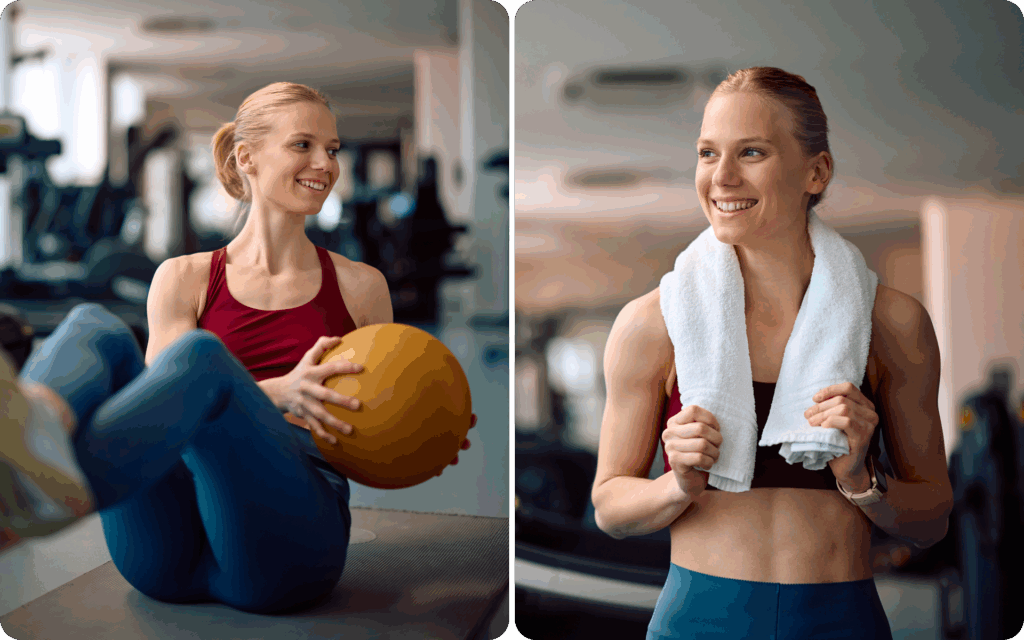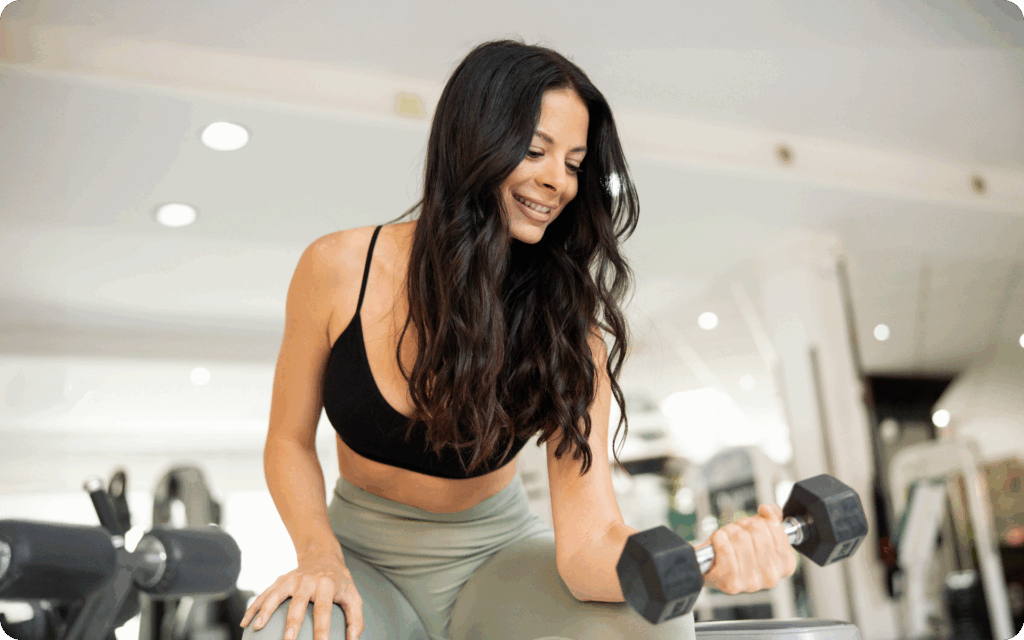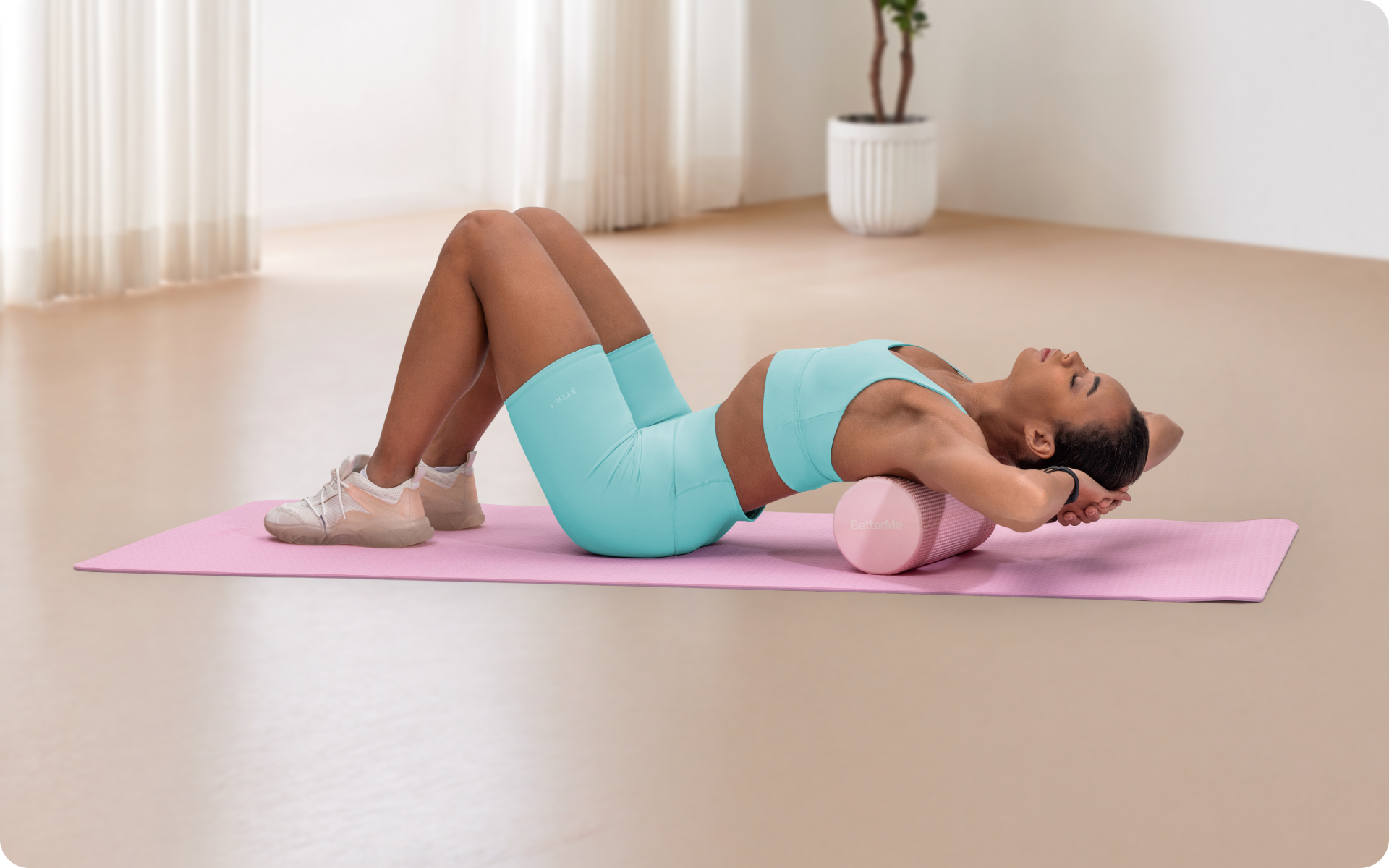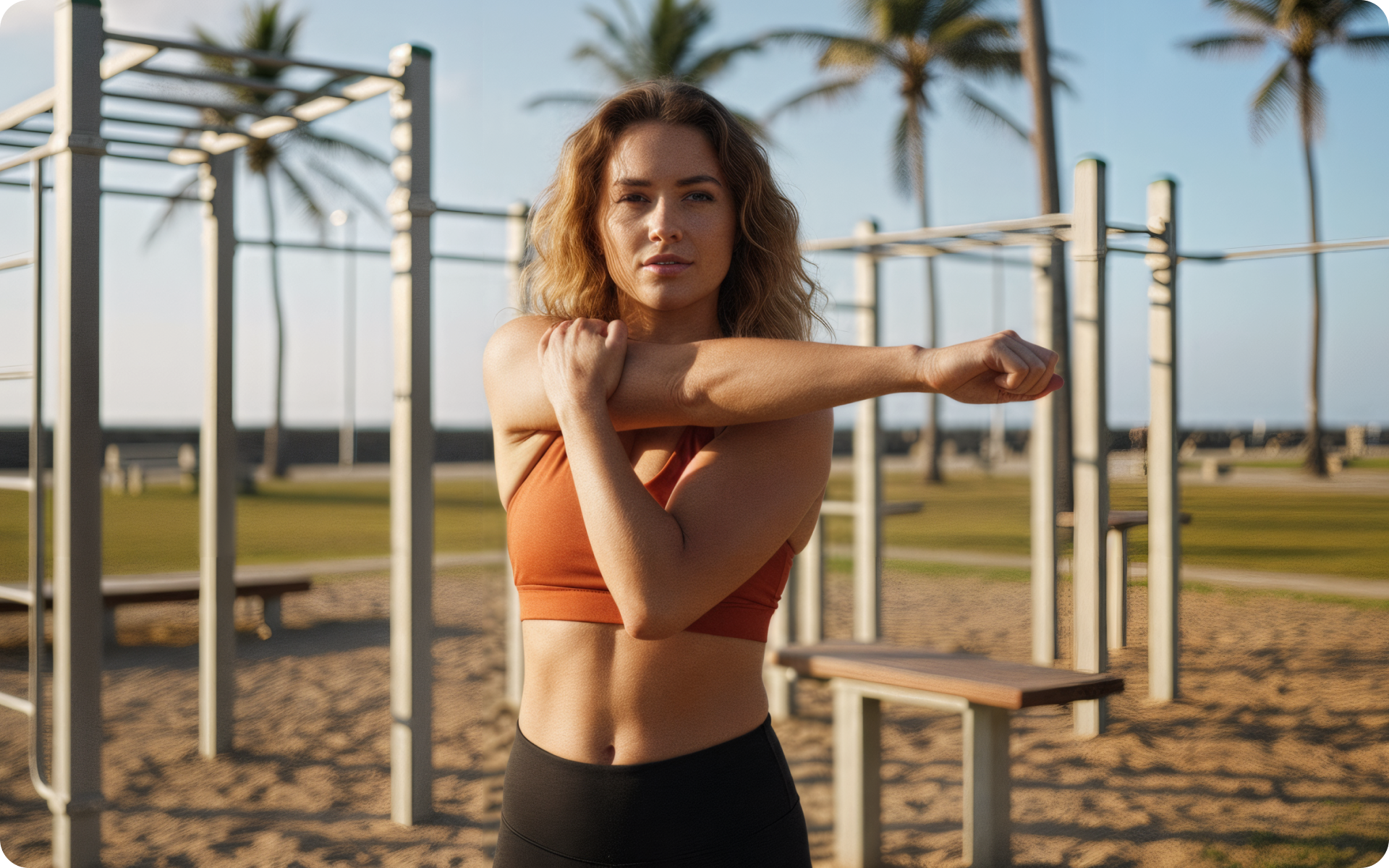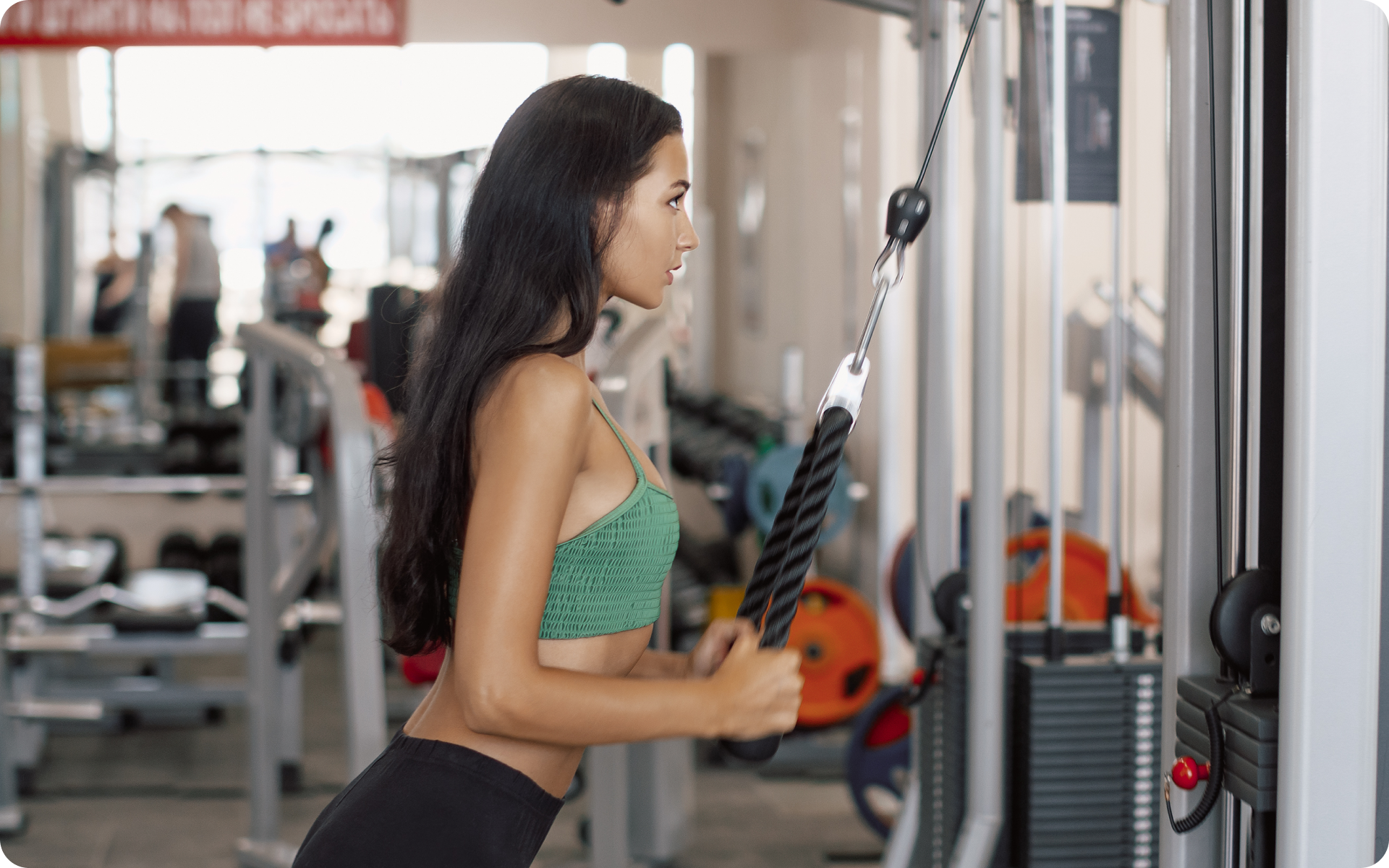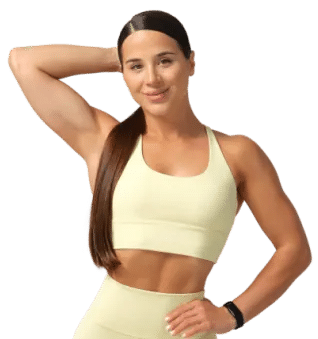Walking into a gym for the first time can feel overwhelming. Rows of machines, free weights, and group fitness classes all compete for your attention, but understanding the different types of gym workouts and when to use them can transform your confusion into confidence.
Whether you’re aiming to build strength, improve cardiovascular health, or enhance mobility, each workout type serves a specific purpose in your fitness journey. The key lies in matching your goals with the right training approach.
This comprehensive guide breaks down seven essential types of gym workouts, from cardio and strength training to specialized approaches like CrossFit and powerlifting. You’ll discover what each workout involves and when to incorporate them for maximum results.
How Many Types of Gym Workouts Are There?
The fitness landscape offers diverse training methods, each of which targets different physiological adaptations. While countless variations exist, most gym workouts fall into seven primary categories that address specific fitness goals and physical demands.
1. Cardio Workouts
Cardiovascular exercise strengthens your heart, improves circulation, and enhances your body’s ability to deliver oxygen to working muscles. These workouts trigger adaptations in your cardiovascular system, which increases stroke volume and improves cardiac output efficiency (1, 2).
The Physical Activity Guidelines for Americans recommend at least 150 minutes of moderate-intensity cardio or 75 minutes of vigorous-intensity cardio weekly for substantial health benefits (3).
When to do cardio workouts: Cardio can serve as your primary workout focus, complement strength training sessions, or help with active recovery. For optimal results, perform cardio after strength training to avoid compromising lifting performance (4).
LISS (Low-Intensity Steady State)
LISS involves maintaining a consistent, moderate effort for extended periods – typically 20-60 minutes at 60-80% of your maximum heart rate (5).
Examples include:
- Brisk walking on a treadmill
- Cycling at a steady pace
- Swimming laps
- Using an elliptical machine
HIIT (High-Intensity Interval Training)
HIIT alternates between short bursts of intense activity (> 75% maximum heart rate) and recovery periods (6). Sessions typically last 10-30 minutes.
Examples include:
- Sprint intervals on a treadmill
- Bike sprints with rest periods
- Rowing machine intervals
- Circuit training with minimal rest
BetterMe: Health Coaching app helps you achieve your body goals with ease and efficiency by helping to choose proper meal plans and effective workouts. Start using our app and you will see good results in a short time.
2. Strength Training
Strength training involves working against resistance to build muscle mass, increase bone density, and improve functional strength (7). This type of exercise creates microscopic tears in muscle fibers, which repair and grow stronger during recovery (8).
When to do strength training: Schedule strength sessions 2-4 times weekly, allowing 48-72 hours of recovery between training the same muscle groups (9). Perform strength work before cardio in combined sessions.
Free Weights
Free weights challenge stabilizing muscles and allow for natural movement patterns through multiple planes of motion (10).
Examples include:
- Barbell squats and deadlifts
- Dumbbell presses and rows
- Kettlebell swings and carries
- Olympic lifts such as cleans and snatches
Weight Machines
Machines provide guided movement patterns and isolated muscle targeting (10), which makes them ideal for beginners or rehabilitation purposes.
Examples include:
- Leg press machines
- Lat pulldown stations
- Chest press machines
- Cable crossover systems
Bodyweight Exercises/Calisthenics
Calisthenics uses your body weight as resistance, emphasizing functional movement patterns and relative strength development (11).
Examples include:
- Push-ups and pull-ups
- Squats and lunges
- Planks and mountain climbers
- Handstand progressions
Learn more about the various types of Calisthenics movements and progressions.
3. Functional Training
Functional training emphasizes movements that translate to real-world activities. These exercises often involve multiple muscle groups working together, improving coordination, balance, and movement efficiency (12).
When to do functional training: Incorporate functional movements 2-3 times weekly as part of your regular routine, or dedicate specific sessions to movement quality and athletic performance.
TRX Suspension Training
TRX systems use suspended straps to create instability, which forces your core and stabilizing muscles to work harder during exercises (13).
Examples include:
- TRX squats and lunges
- Suspended push-ups
- TRX rows and Y-pulls
- Single-leg deadlifts
Medicine Ball Workouts
Medicine balls add resistance while allowing for explosive, multi-planar movements that improve power and coordination (14).
Examples include:
- Medicine ball slams
- Rotational throws
- Wall ball shots
- Russian twists with medicine ball
Reasons why BetterMe is a safe bet: a wide range of calorie-blasting workouts, finger-licking recipes, 24/7 support, challenges that’ll keep you on your best game, and that just scratches the surface! Start using our app and watch the magic happen.
Balance and Stability Exercises
These exercises challenge proprioception and core stability, which improves your body’s ability to maintain control during movement (15).
Examples include:
- Bosu ball squats
- Single-leg stands
- Stability ball planks
- Balance beam walking
Plyometrics
Plyometric exercises develop explosive power through rapid muscle lengthening followed by forceful contractions (16).
Examples include:
- Box jumps
- Burpees
- Jump squats
- Clapping push-ups
4. Flexibility and Mobility Workouts
Flexibility and mobility work improves range of motion, reduces muscle tension, and helps prevent injuries (17). These exercises enhance joint function and muscle elasticity, supporting better movement quality in all activities.
When to do flexibility and mobility work: Incorporate dynamic mobility exercises in your warm-up and static stretching in your cool-down. Dedicate 10-15 minutes to mobility work on both rest days and training days for optimal results.
Yoga
Yoga combines stretching, balance, and mindfulness practices to improve flexibility, strength, and mental well-being (18).
Examples include:
- Downward-facing dog
- Warrior poses
- Triangle pose
- Child’s pose
Dynamic Stretching
Dynamic stretching involves controlled movements that take joints through their full range of motion, preparing muscles for exercise (19).
Examples include:
- Leg swings
- Arm circles
- Walking lunges
- High knees
Foam Rolling
Foam rolling applies pressure to muscle tissue, which helps release tension and improves blood flow to help with recovery (20).
Examples include:
- IT band rolling
- Quadriceps rolling
- Thoracic spine extension
- Calf rolling
5. Group Fitness Classes
Group fitness classes provide structured workouts that are led by instructors, offering motivation, variety, and social interaction. These classes often combine multiple training elements in engaging formats.
When to do group fitness classes: Schedule classes 2-4 times weekly as your primary workout method, or use them to supplement individual training sessions for variety and motivation.
Zumba
Zumba combines dance movements with cardiovascular exercise, typically burning 260-475 calories per 40-minute class (21).
Examples include:
- Salsa-inspired movements
- Hip-hop choreography
- Latin dance steps
- Rhythmic squats and lunges
Pilates
Pilates focuses on core strength, flexibility, and body alignment through controlled, precise movements (22).
Examples include:
- The hundred
- Roll-ups
- Single-leg circles
- Plank variations
Bootcamp
Bootcamp classes combine cardiovascular and strength exercises in high-energy, military-inspired formats.
Examples include:
- Circuit training stations
- Partner exercises
- Timed challenges
- Obstacle course elements
6. Powerlifting and Olympic Lifting
These specialized strength sports focus on maximal force production through specific movement patterns. Powerlifting emphasizes absolute strength (23), while Olympic lifting develops explosive power (24).
When to do powerlifting and Olympic lifting: These specialized forms require dedicated practice 3-4 times weekly, with emphasis on technical skill development and progressive loading.
Powerlifting Movements
Powerlifting centers on three main lifts that test your maximum strength capabilities (23).
Examples include:
- Back squats (targeting the legs and core)
- Bench press (targeting the chest, shoulders, triceps)
- Deadlifts (targeting the posterior chain)
- Accessory movements for weak points
Olympic Lifting
Olympic lifting involves explosive, full-body movements that require technical skill and power development (24).
Examples include:
- Clean and jerk
- Snatch
- Clean and press
- Pull variations and accessory work
7. Specialized Workouts
Specialized workouts target specific goals or populations, requiring tailored approaches to meet unique demands and objectives.
When to do specialized workouts: Incorporate these based on specific needs – bodybuilding for physique goals, endurance training for athletic events, or rehabilitation for injury recovery.
Bodybuilding
Bodybuilding focuses on muscle hypertrophy and aesthetic development through targeted isolation exercises and strategic programming (25).
Examples include:
- Isolation exercises (bicep curls, leg extensions)
- High-volume training (3-4 sets of 8-12 reps)
- Split routines targeting specific muscle groups
- Posing and presentation practice
Endurance Training
Endurance training develops aerobic capacity and muscular endurance for sustained performance over extended periods (1).
Examples include:
- Long, steady-state cardio sessions
- Tempo runs or rides
- Progressive distance increases
- Sport-specific skill development
Rehabilitation Workouts
Rehabilitation exercise focuses on restoring function, reducing pain, and preventing re-injury through targeted therapeutic movements (26).
Examples include:
- Physical therapy exercises
- Corrective movement patterns
- Low-impact activities
- Progressive loading protocols
Explore more about different types of exercise and their specific applications.
Read more: Beginner Calisthenics Moves: A Complete Guide to Getting Started
What Are the Most Effective Types of Gym Workouts for Beginners?
Starting your fitness journey requires a foundation that’s built on consistency and enjoyment rather than complexity. The most effective beginner approach meets the Physical Activity Guidelines while establishing sustainable habits.
Research has shown that full-body strength training performed 2-3 times weekly provides optimal stimulus for beginners (27). Each session should include 3-4 exercises targeting major muscle groups, with 3-4 working sets of 5-8 repetitions using challenging but manageable weights.
Cardio foundation: Start with 150 minutes of moderate-intensity cardio weekly. This can include brisk walking at 3-4 mph, cycling at a comfortable pace, or swimming laps (28). Begin with 20-30-minute sessions and gradually increase duration.
Strength basics: Focus on compound movements like squats, deadlifts, push-ups, and rows. These exercises work multiple muscle groups simultaneously, which provides maximum benefit for your time investment (29).
Recovery priorities: Allow 48-72 hours between strength sessions that target the same muscles. This recovery period enables muscle protein synthesis and strength adaptations (30).
The key for beginners lies in progressive overload – gradually increasing difficulty over time. This might mean adding 5-10 pounds to your lifts weekly or increasing cardio duration by 5-10 minutes.
Most importantly, you should choose activities you enjoy. Sustainable fitness habits develop from consistent participation, not perfect programming.
What Are the Best Types of Gym Workouts for Fat Loss?
Fat loss occurs through two primary pathways: creating a caloric deficit through increased energy expenditure or reducing caloric intake. The most effective approach typically combines both strategies.
Pathway 1: Increased Energy Expenditure
High-intensity interval training (HIIT) can burn 400-600 calories per hour (31) while creating an “afterburn effect” that elevates metabolism for hours post-exercise (32). HIIT workouts that alternate 30 seconds of maximum effort with 90 seconds of recovery prove particularly effective (6).
Strength training preserves lean muscle mass during weight loss while burning 200-400 calories per session (28). Compound movements such as squats, deadlifts, and presses engage multiple muscle groups, maximizing caloric expenditure (29).
Pathway 2: Combined Approach
Circuit training combines strength and cardiovascular elements, potentially burning an average of 240 calories per 30-minute session (31). These workouts keep heart rate elevated throughout the session.
The Role of Diet
Exercise alone rarely creates sufficient caloric deficits for significant fat loss. To lose body fat, you need to create this deficit through exercise, diet, or a combined approach (33).
Research has suggested that diet is key for weight loss success (34). However, exercise becomes essential for maintaining weight loss long-term and preserving muscle mass during caloric restriction.
Sustainable fat loss strategies: Combine 3-4 strength training sessions weekly with 150-300 minutes of moderate cardio. This approach may create a 1,500-2,000-calorie weekly deficit when combined with modest dietary changes.
Learn more about different types of workouts for fat loss and their specific applications.
What Are Time-Efficient Gym Workouts for Busy Schedules?
Time constraints don’t have to derail your fitness goals. Research below shows that shorter, high-intensity workouts can provide similar benefits to longer, moderate-intensity sessions.
HIIT (High-Intensity Interval Training)
HIIT sessions lasting 15-20 minutes can provide cardiovascular benefits that are equivalent to 45-60 minutes of steady-state cardio (35).
Sample HIIT Schedule:
- Warm-up: 3 minutes of easy movement
- Work intervals: 8 rounds of 30 seconds maximum effort
- Recovery: 90 seconds of easy movement between intervals
- Cool-down: 3 minutes of easy movement
- Total time: 18 minutes
Tabata Protocol
Tabata involves 4 minutes of extremely high-intensity work: 8 rounds of 20 seconds maximum effort followed by 10 seconds rest (36).
Sample Tabata Schedule:
- Warm-up: 5 minutes of dynamic movement
- Tabata rounds: 4 minutes (20 seconds on, 10 seconds off)
- Cool-down: 5 minutes of stretching
- Total time: 14 minutes
Circuit Training
Circuit training combines strength and cardiovascular elements (37), typically completed in 20-30 minutes.
Sample Circuit Schedule:
- Warm-up: 3 minutes of light movement
- Circuit: 3 rounds of 6 exercises, 45 seconds work, 15 seconds transition
- Rest: 60 seconds between rounds
- Cool-down: 5 minutes of stretching
- Total time: 25 minutes
These time-efficient approaches can maintain fitness when performed 3-4 times weekly, although they may not provide the same adaptations as longer, more varied training sessions.
Read more: Complete Calisthenics: 8 Exercises for a Full-Body Workout
Can You Combine Cardio and Weight Training in One Workout?
Yes, you can effectively combine cardiovascular and strength training in single sessions, although the approach affects the specific adaptations you’ll achieve.
Sequential Training Approach
The most effective method performs strength training first, followed by cardiovascular work. This sequence preserves strength performance while still providing cardiovascular benefits.
Research has shown that performing cardio before strength training can drastically reduce lifting performance (38). However, strength training before cardio has minimal impact on subsequent cardiovascular performance.
Concurrent Training Options
Option 1: Strength + Low-Intensity Cardio
- Complete a strength training session
- Follow with 20-30 minutes of steady-state cardio at 60-70% maximum heart rate
- This approach supports recovery while adding cardiovascular volume
Option 2: Circuit Training
- Alternate strength and cardiovascular exercises in circuits
- Maintains an elevated heart rate throughout the session
- Provides both strength and cardiovascular stimulus
Separation Recommendations
For optimal results in both strength and cardiovascular adaptations, consider separating high-intensity sessions:
- Perform intense strength and HIIT workouts on different days
- Allow 6-8 hours between high-intensity sessions when training twice daily
- Use low-intensity cardio on strength training days for active recovery
This separation prevents excessive fatigue that could compromise performance and increase the risk of injury.
How to Choose Between Full-Body, Upper/Lower, and Split Workouts
Your choice between workout splits depends primarily on training frequency, experience level, and specific goals, rather than one approach being inherently superior.
Full-Body Workouts
Best for: Beginners, those who train 2-3 days weekly, or individuals who are prioritizing overall fitness over specific adaptations (9).
Full-body routines train all the major muscle groups in each session, typically featuring 6-8 compound exercises. This approach maximizes training stimulus when frequency is limited and provides balanced development.
Upper/Lower Split
Best for: Intermediate trainees who train 4 days weekly and want increased volume for specific muscle groups.
Upper/lower splits divide training between upper-body (chest, back, shoulders, arms) and lower-body (legs, glutes) sessions. This allows higher training volume per muscle group while maintaining reasonable session length.
Body Part Splits
Best for: Advanced trainees who train 5-6 days weekly with specific physique or strength goals.
Traditional body part splits (chest day, back day, leg day, etc.) allow maximum volume and specialization for individual muscle groups. However, they require high training frequency to stimulate each muscle group adequately.
Push/Pull/Legs Split
Best for: Intermediate trainees who are looking to increase training frequency while maintaining session length.
This split divides exercises into pushing movements (chest, shoulders, triceps), pulling movements (back, biceps), and leg movements. Training can be done on a 3-day or 6-day rotation.
Practical Considerations
Training frequency determines optimal split selection:
- 2-3 days weekly: Full-body workouts
- 4 days weekly: Upper/lower split
- 5-6 days weekly: Body part split
Recovery capacity also influences choice. Beginners require more recovery between sessions, favoring full-body approaches with rest days between workouts.
How to Set Gym Goals and Choose the Right Workout Split
Effective goal setting starts with specific, measurable objectives rather than vague aspirations. Research has shown that individuals who set specific goals achieve 90% better outcomes than those with general intentions.
SMART Goal Framework
Apply the SMART criteria to your fitness objectives:
- Specific: “Increase bench press by 20 pounds” vs. “get stronger”
- Measurable: Track weight lifted, distances covered, or body composition changes
- Achievable: Set challenging but realistic targets based on your current abilities
- Relevant: Align your goals with your lifestyle and priorities
- Time-bound: Establish clear deadlines for achievement
Goal-Based Split Selection
Match your workout split to your primary objectives:
General Health and Fitness
- Goal: Meet physical activity guidelines, improve overall health
- Recommended: Full-body workouts 2-3 times weekly
- Focus: Compound movements, moderate intensity
Strength Development
- Goal: Increase maximal strength in specific lifts
- Recommended: Upper/lower split or powerlifting-focused routine
- Focus: Progressive overload, skill practice in competition lifts
Muscle Building
- Goal: Increase muscle mass and definition
- Recommended: Upper/lower or body part split depending on frequency
- Focus: Higher training volume, isolation exercises
Athletic Performance
- Goal: Improve sport-specific abilities
- Recommended: Functional training combined with sport-specific plyometric-focused work
- Focus: Movement patterns, power development, conditioning
Assessment and Adjustment
Regularly evaluate progress toward your goals:
- Track objective measures (strength, endurance, body composition)
- Assess subjective factors (energy levels, motivation, enjoyment)
- Adjust programming every 4-6 weeks based on your progress and preferences
Remember that goals can evolve. What starts as general fitness may develop into specific strength or physique objectives as you gain experience and discover preferences.
High-intensity activities typically burn the most calories per minute due to the duration of an elevated heart rate throughout this form of exercise. CrossFit sessions and circuit training can burn 400-600 calories per hour, while HIIT workouts may burn 300-450 calories in shorter timeframes. However, longer-duration activities such as moderate-intensity cardio (200-400 calories per hour) may burn more total calories due to extended duration. The “afterburn effect” from high-intensity exercise can also elevate metabolism for 12-24 hours post-workout. Most exercise physiologists recommend changing workout variables every 4-6 weeks to prevent plateaus and maintain adaptation stimulus. However, complete workout overhauls aren’t necessary – small modifications such as changing exercises, rep ranges, or intensity can provide new stimulus. Beginners can follow the same program for 8-12 weeks while still making progress, while advanced trainees may need more frequent variations every 2-4 weeks. Powerlifting movements (squat, bench press, deadlift) can be appropriate for beginners when learned with proper technique and progressive loading. However, beginners should start with bodyweight and light resistance to master movement patterns before adding significant weight. Working with a qualified coach for the first 4-8 weeks helps establish proper form and safe progression protocols. Begin with 2-3 sessions weekly, focusing on technique over maximum loads. Active recovery workouts that involve low-intensity movement are safest for recovery days. Options include gentle yoga (holding poses for 30-60 seconds), walking at 2-3 mph for 20-30 minutes, or light swimming. These activities promote blood flow and reduce muscle stiffness without adding significant stress (39). Avoid high-intensity exercise, heavy lifting, or activities that cause muscle fatigue on designated recovery days. Static stretching and foam rolling for 10-15 minutes can also support recovery.Frequently Asked Questions
Which type of gym workout burns the most calories?
How often should you switch types of workouts for progress?
Are powerlifting workouts suitable for beginners?
What’s the safest workout type for recovery?
The Bottom Line
There’s plenty to do at the gym. From warm-ups and stretching to strength training and cardio, it can be overwhelming to know where to start. However, when you have a clear understanding of your goals and the right approach, it becomes much easier to navigate through all the options. Consider working with a certified fitness professional to develop a personalized plan that is aligned with your goals and targets your specific needs.
DISCLAIMER:
This article is intended for general informational purposes only and does not serve to address individual circumstances. It is not a substitute for professional advice or help and should not be relied on for making any kind of decision-making. Any action taken as a direct or indirect result of the information in this article is entirely at your own risk and is your sole responsibility.
BetterMe, its content staff, and its medical advisors accept no responsibility for inaccuracies, errors, misstatements, inconsistencies, or omissions and specifically disclaim any liability, loss or risk, personal, professional or otherwise, which may be incurred as a consequence, directly or indirectly, of the use and/or application of any content.
You should always seek the advice of your physician or other qualified health provider with any questions you may have regarding a medical condition or your specific situation. Never disregard professional medical advice or delay seeking it because of BetterMe content. If you suspect or think you may have a medical emergency, call your doctor.
SOURCES:
- Adaptations to Endurance and Strength Training (2018, pmc.ncbi.nlm.nih.gov)
- The (Many) Benefits of a Cardio Workout (2023, health.clevelandclinic.org)
- The Physical Activity Guidelines for Americans (2018, pmc.ncbi.nlm.nih.gov)
- Effects of aerobic exercise on strength performance following various periods of recovery (2003, pubmed.ncbi.nlm.nih.gov)
- LISS vs. HIIT Training Sessions – Can both lead to Weight Loss? (2017, sites.udel.edu)
- Evidence-Based Effects of High-Intensity Interval Training on Exercise Capacity and Health: A Review with Historical Perspective (2021, pmc.ncbi.nlm.nih.gov)
- Resistance training – health benefits (2022, betterhealth.vic.gov.au)
- The Mechanisms of Muscle Hypertrophy and Their Application to Resistance Training (2010, journals.lww.com)
- Progression Models in Resistance Training for Healthy Adults (2009, journals.lww.com)
- Effect of free-weight vs. machine-based strength training on maximal strength, hypertrophy and jump performance – a systematic review and meta-analysis (2023, biomedcentral.com)
- Bodyweight Training: A Return To Basics (2010, journals.lww.com)
- Effect of Functional Training on Physical Fitness Among Athletes: A Systematic Review (2021, frontiersin.org)
- The Effects of Suspension Training on Dynamic, Static Balance, and Stability: An Interventional Study (2023, mdpi.com)
- IMPACTS OF MEDICINE BALL TRAINING ON EXPLOSIVE STRENGTH IN TENNIS PLAYERS’ UPPER BODIES (2023, researchgate.net)
- Balance Training (n.d., physio-pedia.com)
- CURRENT CONCEPTS OF PLYOMETRIC EXERCISE (2015, pmc.ncbi.nlm.nih.gov)
- The Surprising Benefits of Performing Daily Mobility Exercises (2023, acefitness.org)
- Exploring the therapeutic effects of yoga and its ability to increase quality of life (2011, pmc.ncbi.nlm.nih.gov)
- CURRENT CONCEPTS IN MUSCLE STRETCHING FOR EXERCISE AND REHABILITATION (2012, pmc.ncbi.nlm.nih.gov)
- A Meta-Analysis of the Effects of Foam Rolling on Performance and Recovery (2019, frontiersin.org)
- Zumba®: Is the “Fitness-Party” a Good Workout? (2012, pmc.ncbi.nlm.nih.gov)
- Pilates: how does it work and who needs it? (2011, pmc.ncbi.nlm.nih.gov)
- Powerlifting (2022, ebsco.com)
- Weightlifting (2025, ebsco.com)
- Training Programs Designed for Muscle Hypertrophy in Bodybuilders: A Narrative Review (2020, pmc.ncbi.nlm.nih.gov)
- Principles of Exercise Rehabilitation (n.d., physio-pedia.com)
- No Time to Lift? Designing Time-Efficient Training Programs for Strength and Hypertrophy: A Narrative Review (2021, link.springer.com)
- Physical Activity and Your Weight and Health | Healthy Weight and Growth (2023, cdc.gov)
- Compound Exercises (n.d., physio-pedia.com)
- Why Rest Days Are Important for Muscle Building (n.d., blog.nasm.org)
- Calories burned in 30 minutes of leisure and routine activities (2021, health.harvard.edu)
- Mechanistic and methodological perspectives on the impact of intense interval training on post‐exercise metabolism (2019, onlinelibrary.wiley.com)
- “Calories in, calories out” and macronutrient intake: the hope, hype, and science of calories (2017, journals.physiology.org)
- Optimal Diet Strategies for Weight Loss and Weight Loss Maintenance (2020, pmc.ncbi.nlm.nih.gov)
- Effect of High-Intensity Interval Training vs. Moderate-Intensity Continuous Training on Fat Loss and Cardiorespiratory Fitness in the Young and Middle-Aged a Systematic Review and Meta-Analysis (2023, pmc.ncbi.nlm.nih.gov)
- Exercise Intensity and Energy Expenditure of a Tabata Workout (2013, pmc.ncbi.nlm.nih.gov)
- Effects of Resistance Circuit-Based Training on Body Composition, Strength and Cardiorespiratory Fitness: A Systematic Review and Meta-Analysis (2021, pmc.ncbi.nlm.nih.gov)
- Effects of aerobic exercise on strength performance following various periods of recovery (2003, pubmed.ncbi.nlm.nih.gov)
- Active Recovery: Reduce Fatigue and Enhance Performance (2020, issaonline.com)
